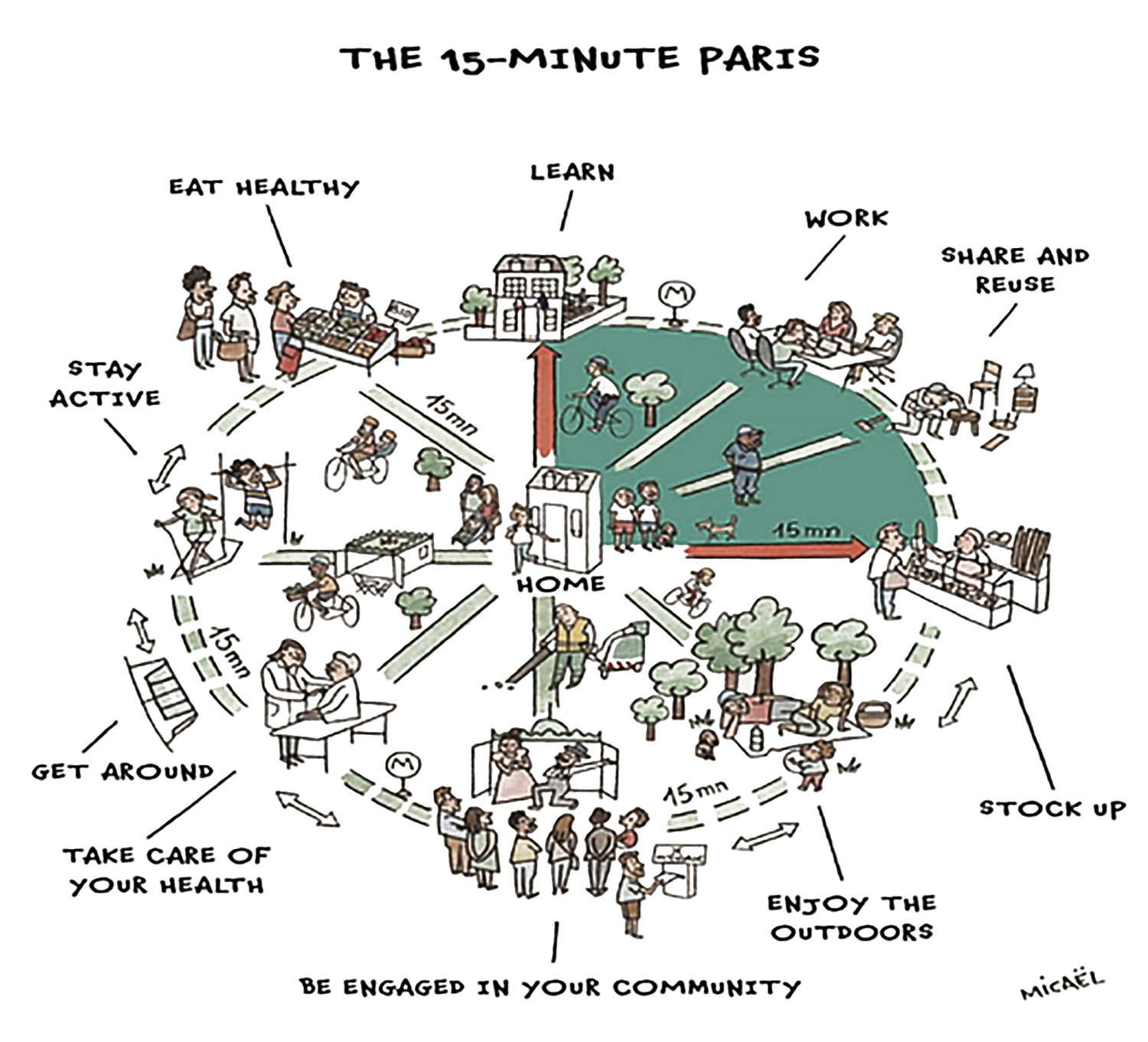Reducing the amount of cars from city streets and having greater choice in the availability and access of daily amenities within walking or cycling distance is a no-brainer for some but in recent weeks, traffic calming measures in Oxford, have become an unlikely source of a new conspiracy theory - a new “climate lockdown.”
For years, European cities have been trying to reduce the imbalance between people and cars through various measures: from extensive bike lanes in Berlin to pedestrianising Pontevedra. In the UK, the Low Traffic Neighbourhoods (LTNs) scheme is a common strategy. LTNs cut the number of cars passing through residential streets by erecting barriers called ‘modal filters’. It’s been a feature of towns since the 1960s, but the pandemic catalysed their roll-out in London and other cities. However, a 15-minute cities is about a lot more than just mobility and provides a lot for us to think about when considering a more sustainable, urban future.
15-minute cities are a useful tool in developing more sustainable urban growth, and they are already being implemented in various cities around the world.
The idea of a 15-minute city is simple: it is a city where everything you need is within a 15-minute walk or bike ride from your home. This means that residents have access to essential amenities, such as grocery stores, schools, parks, and healthcare facilities, without having to rely on cars or public transportation. By creating compact, walkable neighbourhoods, 15-minute cities aim to reduce the environmental impact of urbanisation, improve public health, and enhance social interaction. Most importantly, they are a tool to provide more choice, not reduce it.
One of the main benefits of 15-minute cities is having greater choice in the availability and access of daily amenities. By providing high quality access to essential amenities many social inequalities can be alleviated. People can be relieved of the burden to commute long distances for access to healthcare or education when it can be accessed within the local area. It also has benefits for strengthening local economic resilience.
They provide more sustainable urban mobility. By reducing the need for cars and public transportation, they can significantly reduce carbon emissions and air pollution, which are major contributors to climate change. Additionally, 15-minute cities can improve public health by promoting physical activity and reducing the risk of chronic diseases.
While there are certainly challenges to overcome, many cities have already started to embrace the concept of 15-minute cities and are working towards creating a more sustainable future for all. One of the main challenges is ensuring that all essential amenities are available within a 15-minute walk or cycle. This requires careful planning and cooperation between planners, policymakers and local communities.
15-minute cities are not a conspiracy theory, but rather a useful tool to help develop sustainable urban growth and most importantly provide greater choice in the availability and access of essential amenities. By promoting sustainable mobility, improving public health, and enhancing social interaction, 15-minute cities can help reduce inequalities and create liveable communities for all.
-
We recently asked: what would it be like to start creating 15-minute cities over wider areas? In our new report, we envision a future where we could split large geographic locations across multiple 15-minute cities and not just surrounding key residential hubs. All of the solutions we explored already exist but perhaps they’re not currently implemented together, at scale, or in an accessible way to all.
Read the full report here: TOWARDS 15,000 (15-MINUTE) CITIES.
-
We recently asked: what would it be like to start creating 15-minute cities over wider areas? In our new report, we envision a future where we could split large geographic locations across multiple 15-minute cities and not just surrounding key residential hubs. All of the solutions we explored already exist but perhaps they’re not currently implemented together, at scale, or in an accessible way to all.
Read the full report here: TOWARDS 15,000 (15-MINUTE) CITIES.
